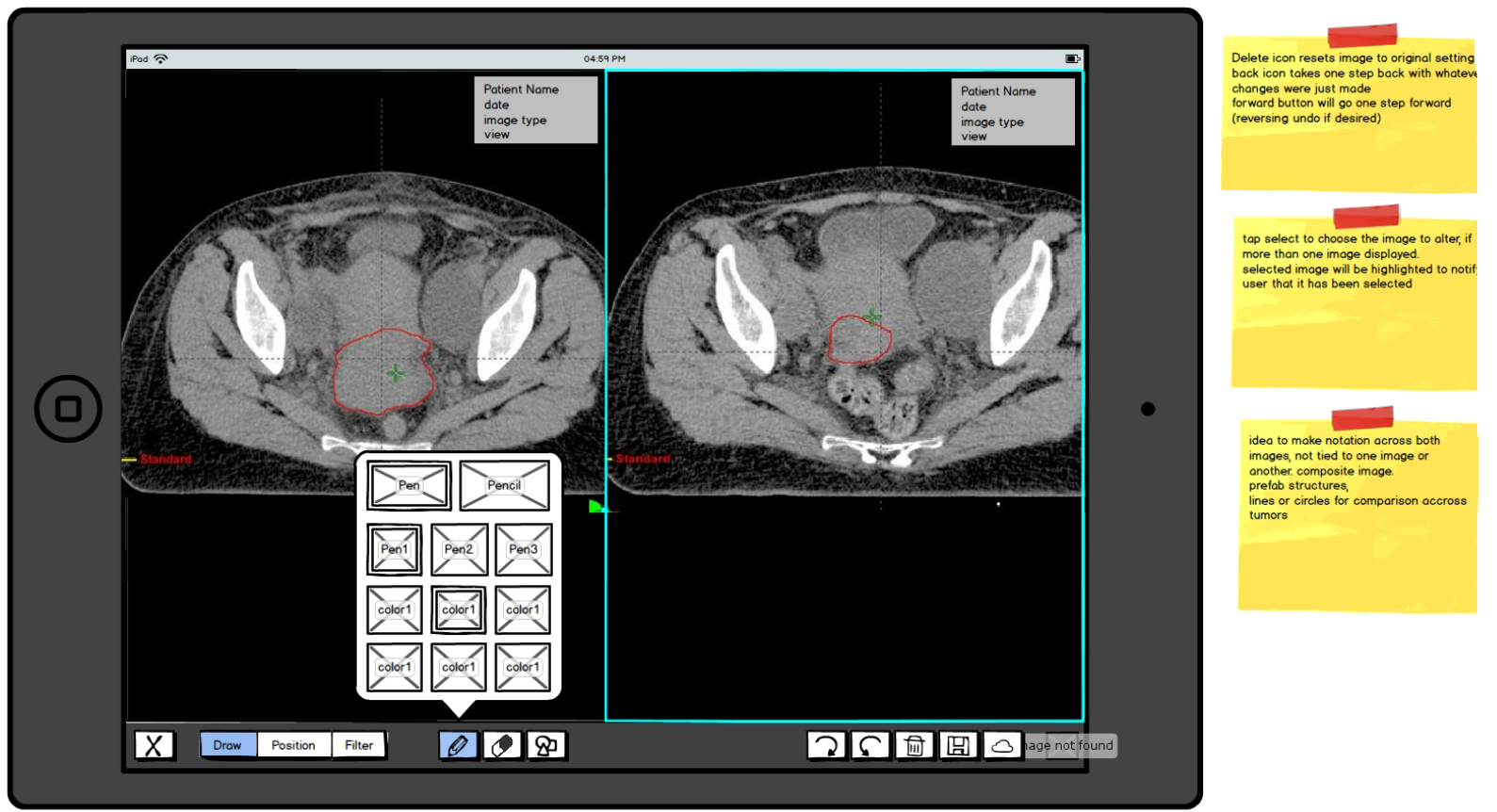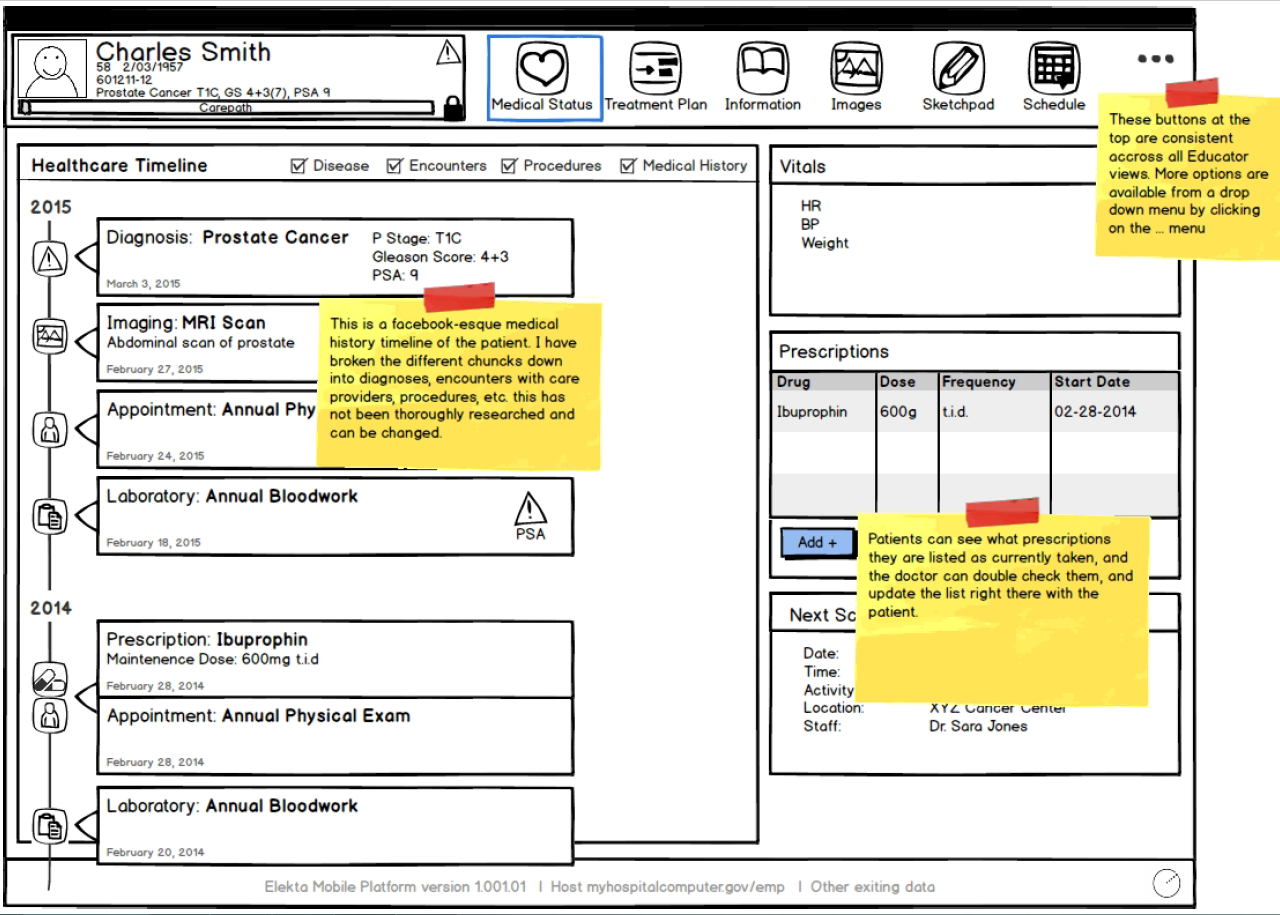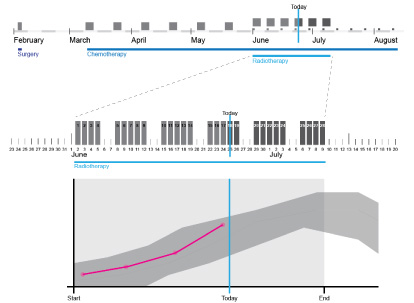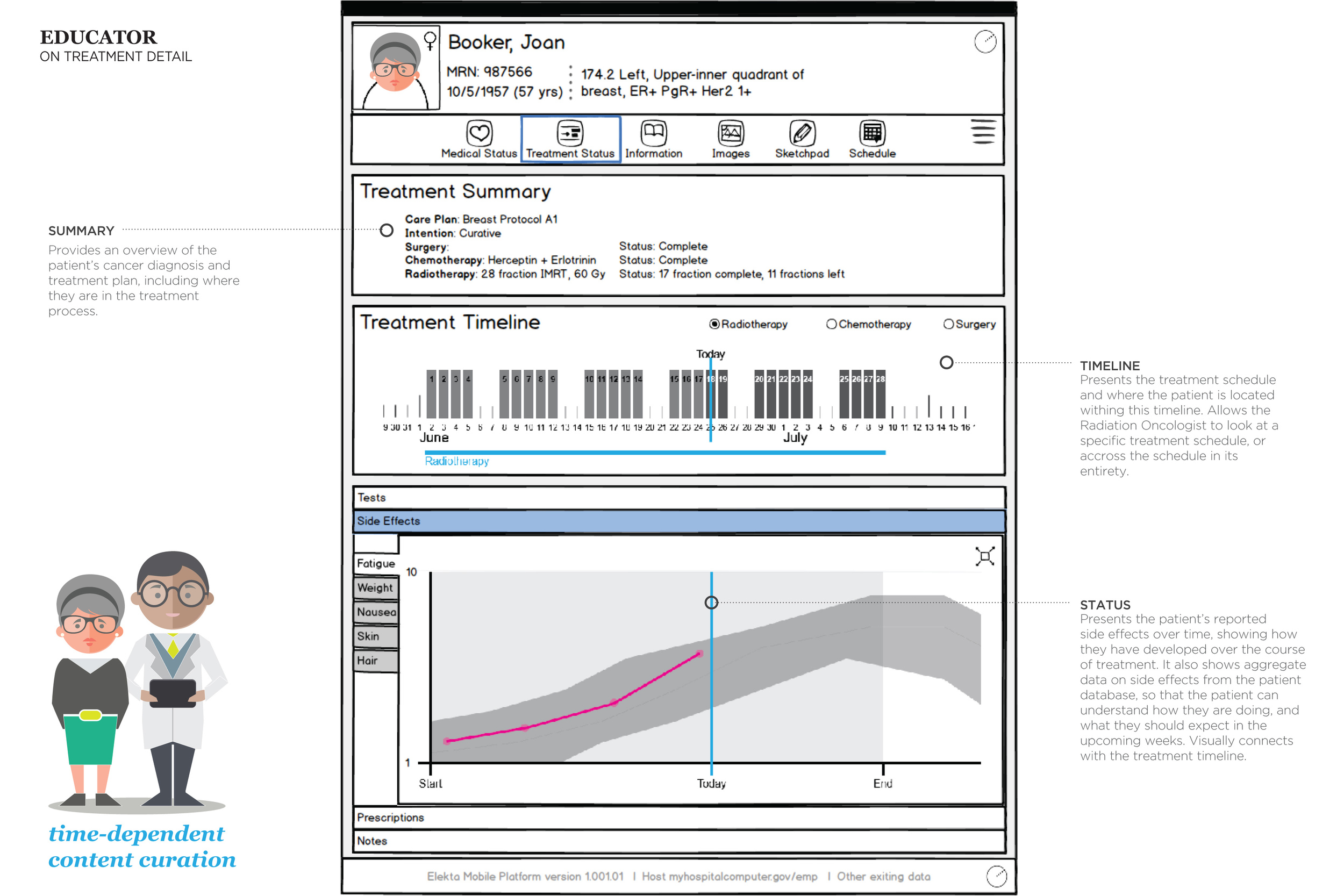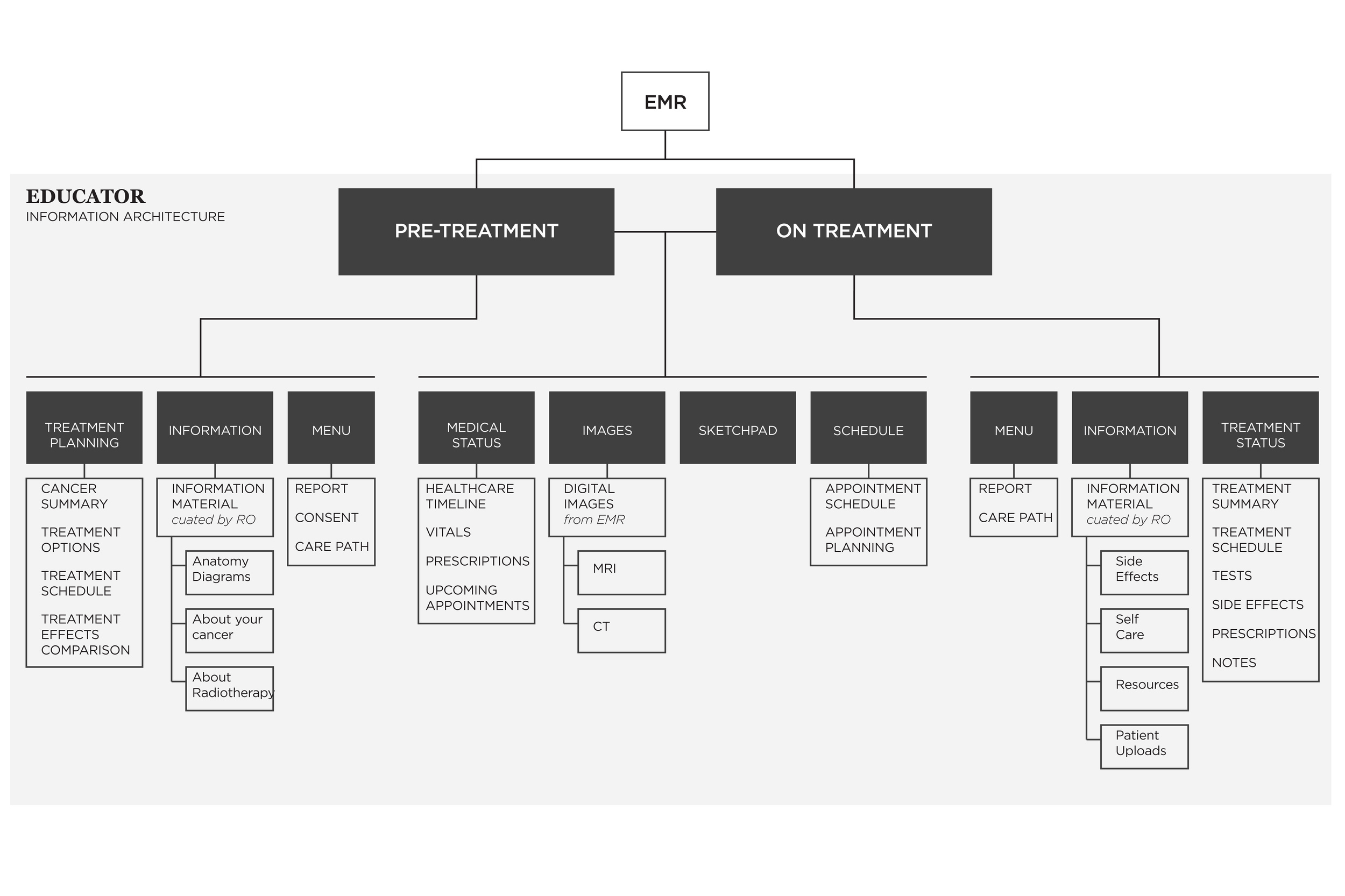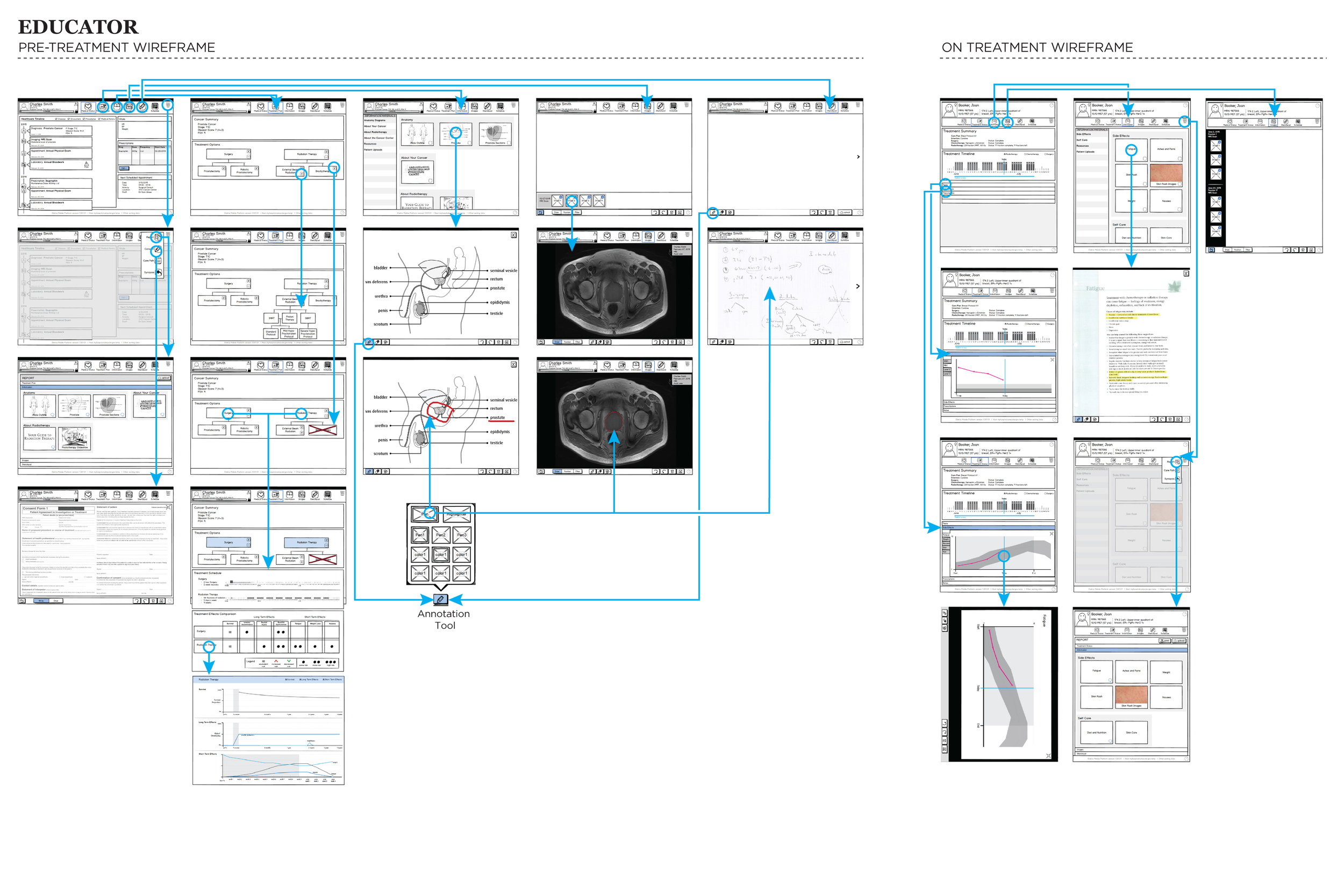POIS Project
Collaborator
Elekta
Expertise
UX Research and Design
Sector
Healthcare
Date
October 2014 - April 2015
Challenge
Cancer is a very complex disease, and so are the various treatment approaches taken to cure it. Individuals with cancer often are presented with an overwhelming amount of complex, verbal information when they meet with their radiation oncologist to determine what course of action will be taken. Both the patient’s understanding and retention of the information shared with them in these conversations is often quite low.
Additionally, radiotherapy can have wide-ranging side effects on the patient over the course of treatment, even extending beyond the last treatment. While often considered to be “easier” than chemotherapy, patients struggle with managing the impact radiotherapy has on their body as they go through the treatment process.
Digital technology is rapidly being integrated into healthcare, with the near ubiquitous usage of electronic medical records, and the increasing availability of web portals where patients can access their medical information from home.
“In this project, I set out to investigate how personalized digital information might be shared with cancer patients during conversations with their oncologist through simple language and visuals to help them more fully understand their disease and treatment.”
Role
I was hired as an UX intern to work on detailing Elekta’s future vision for radiotherapy, where information-guided cancer care is believed to be the key to helping clinicians deliver the most personalized and efficient care to their patients. My focus was on the patient-centered aspects of this vision, where a future oncology information system delivers relevant information to patients when and where they need it, enabling them to make better decisions and supporting them throughout the entire radiotherapy experience, even after the end of their treatment.
I was tasked with researching the information needs of cancer patients at different phases of the radiotherapy treatment pathway, and investigating how digital technology could be used to facilitate better communication and information sharing between patients and their oncologists during their one-on-one meetings. Based upon my research findings, I developed a software concept detailing how information could be packaged, displayed, and delivered to patients within the broader context of Elekta’s current and future oncology information software system products.
Process
Interviews with doctors + patients
I conducted semi-structured interviews with radiation oncologists, radiotherapy patient educators, and cancer survivors who had undergone radiotherapy as part of their treatment process, to understand the type of information that is communicated about treatment options and side effects. I supplemented my interviews with a review of relevant literature on patient information retention, patient-provider communication, and patient-facing displays.
Synthesis
I conducted a thematic analysis of my interview transcripts to identify the important themes that came up for the oncologists, patients, and educators. I identified two main patient personalities which impacted their information needs, and I developed a set of personas based on the behaviors and mindsets I was hearing about – both from doctors and patients.
Insights
The information provided by the radiation oncologist during the initial treatment consultation versus on-treatment visits are distinctly different; educational versus treatment management.
Information layering should be used so that the product can adapt to varying levels of patient education and information needs.
Patients need a better overview of their cancer treatment timeline and side effects.
Concept Model & Diagramming
Based upon my research, I began to model the product ecosystem for my software concept, based upon Elekta’s existing and future software development plans.
Sketching & Wireframing
I quickly jumped into sketching out my ideas about different aspects of the user interface in Balsamiq. I also worked on paper and in Illustrator with some more difficult aspects of the information hierarchy and data visualization.
Prototyping
In order test out some of my layered information navigation interactions, I built clickable prototypes of my wireframes using InVision.
Design Review
I presented my wireframes and clickable prototypes to the radiation oncologists and patient educators I worked with in the research phase, as well as Elekta’s ExecutiveGroup. I used their feedback to help me further develop and refine the concept.
Result
EDUCATOR A Patient-Provider Education Tool
Educator is a software concept which provides digital support for communication in one-on-one meetings between patients and providers. The provider can draw on a tailored collection of educational and illustrative materials to help the patient understand their disease and treatment options and participate in their care. Providers can tailor the information to be shared prior to meeting with the patient and also add annotations and new information in real time during the conversation. All materials are shareable with the patient via the Patient Portal so the patient can revisit and review at their convenience.
Educator was well received by Elekta’s Executive Board and Business Area leaders. Through our conversations, it became clear that the simple, visual overview that Educator provided was something that was needed across Elekta’s vision for information-guided cancer care. Specifically, the treatment overview that Educator provided was perceived as having a direct benefit to other providers involved in the patients’ medical care, especially during oncology rounds where specialists from different areas could quickly and easily be brought up to speed about the specifics of a patient and their treatment status.




